Understanding Sourdough Starter Ratios
This post may contain affiliate links.
Increase your success when it comes to your sourdough starter by understanding sourdough starter ratios. Whether you want to manipulate your sourdough starter to peak first thing in the morning or have a ripe starter to greet you in the kitchen after work, there's no denying that understanding sourdough starter ratios will increase your chance at maintaining a successful sourdough starter.
Starter ratios might seem complicated, but honestly, it's simple! After reading this, you are going to be a pro at feeding your sourdough starter the perfect ratio. And this will help you to bake amazing sourdough, even when you're busy.
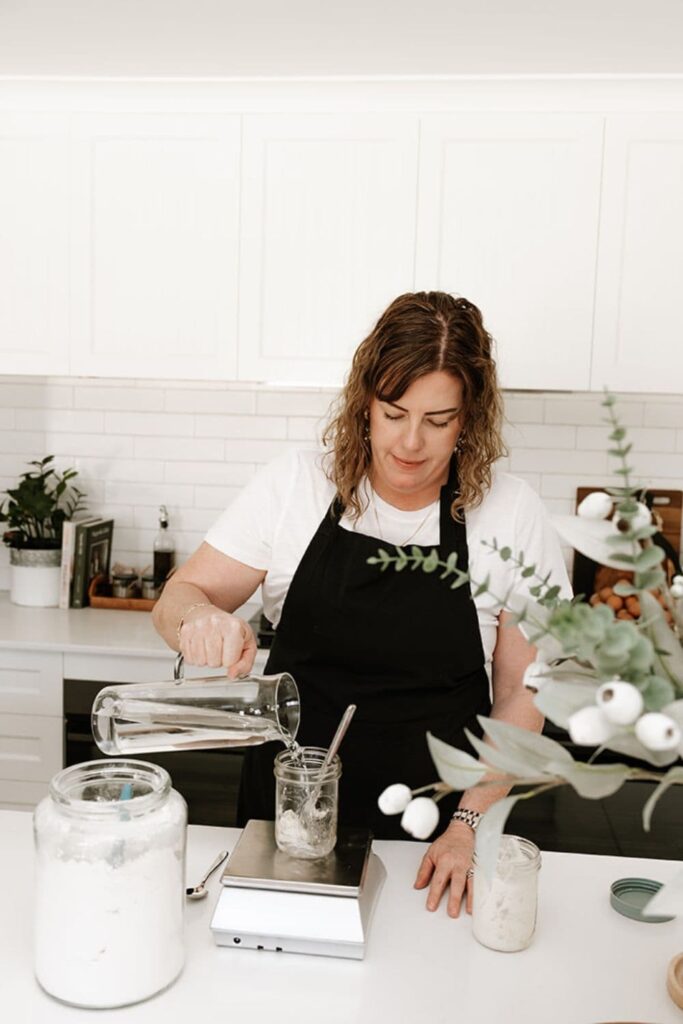
If you are just beginning your sourdough starter journey, I recommend reading these instructions for making a sourdough starter and this collection of common sourdough starter questions and answers as they will be helpful in your overall understanding of this topic.
What is a Sourdough Starter Ratio?
A sourdough starter ratio refers to the proportions of flour and water you feed your sourdough starter. It's a simple calculation used by home bakers and professional bakers alike to measure the amount of flour and water they put in their sourdough starter jar in comparison to the amount of sourdough starter.
Just like any ratio, a sourdough starter ratio compares different parts of an equation - for example a ratio of 1:2:2 demonstrates that there are 3 parts to the equation and that for every 1 part of something there are 2 parts of something else (in this case one part starter to 2 parts flour and 2 parts water.
The ratio is always written in the order of STARTER : FLOUR : WATER.
This ensures you always know which part of the ratio refers to which ingredient, without having to actually write it out in full.
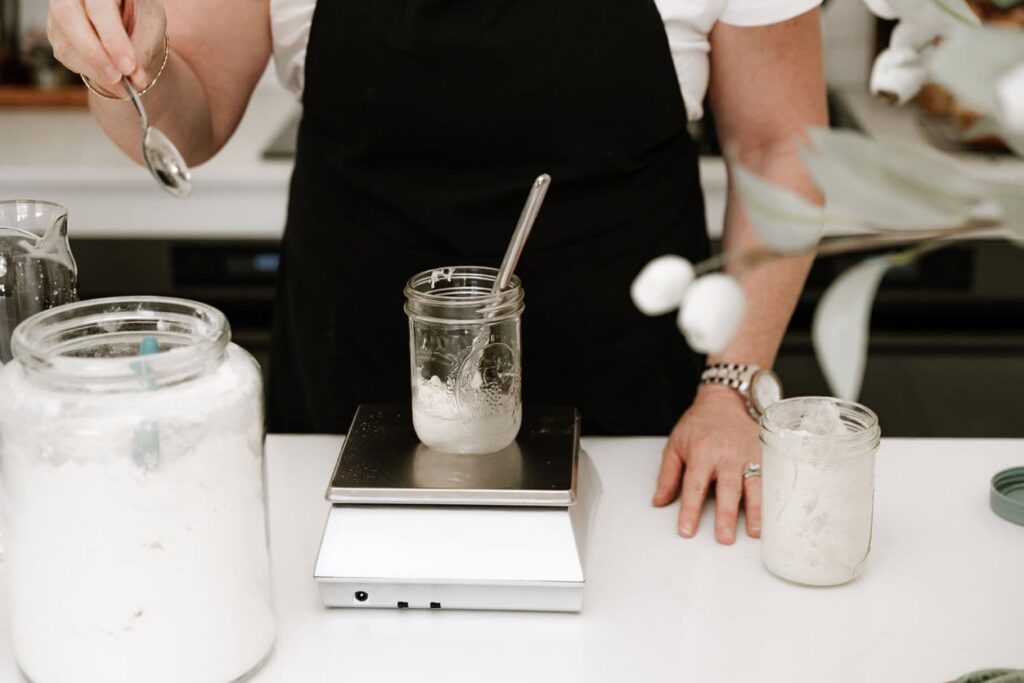
In terms of sourdough starter ratios, the parts are always measured in grams using a digital kitchen scale. This ensures they are accurate and you maintain a 100% hydration starter. If you use volume to measure this ratio, it will not work because a cup of flour and a cup of water are not equal.
When cultivating your wild yeast sourdough starter, understanding how sourdough starter ratios work is a really important step in your sourdough journey. There are so many different ways to feed your starter, it can be hard to know which one is right for your own sourdough starter.
What Ratio is Best?
There's no right answer when it comes to the best ratio for your sourdough starter. The correct ratio for your starter really depends on what you want to do with it.
Lower Ratio - Lower ratios (1:1:1 or 1:2:2) will make your sourdough starter peak more quickly because there isn't a lot of fresh flour for the amount of starter to consume. A lower ratio of flour and water to sourdough starter will produce a more mellow flavored sourdough starter. This ratio is best when you want to bake with your starter in just a few hours.
Higher Ration - A higher ratio (1:5:5 or 1:10:10) will slow your sourdough starter down because there is a lot more flour and water compared with the amount of starter. A higher ratio of flour and water to sourdough starter will produce a more sour flavor sourdough starter. This ratio is best when you want to manipulate your starter into peaking the next day or beyond.
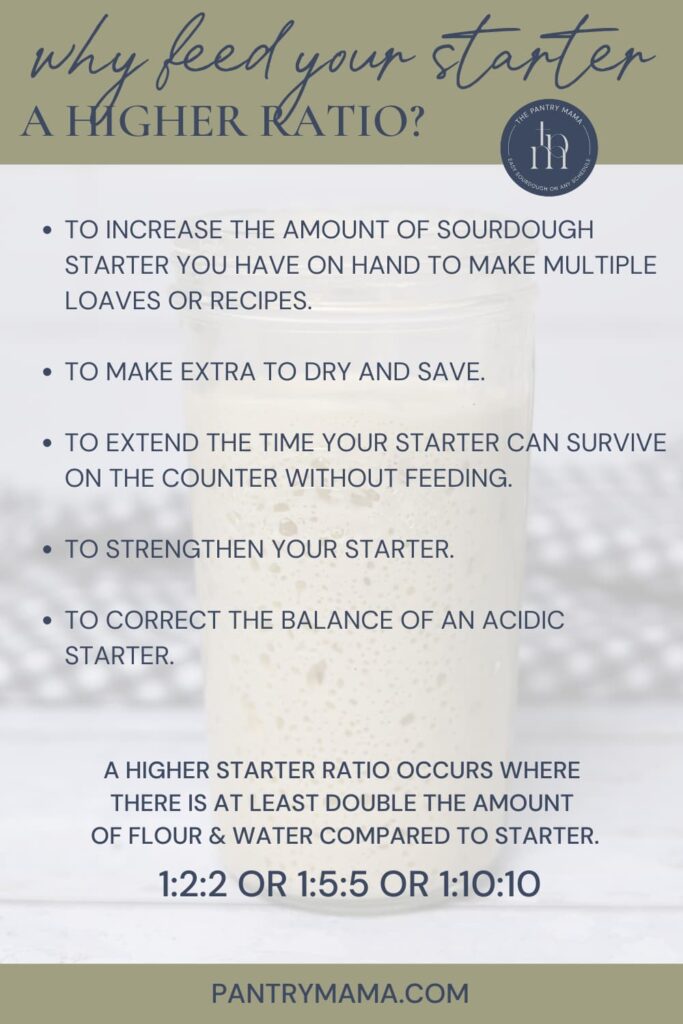
Other reasons for using a higher sourdough starter ratio include:
- to increase the amount of sourdough starter you have on hand
- to make extra to dry and save.
- to extend the time your starter can survive without feeding
- to strengthen your starter
- to correct an acidic starter
I've created this useful graphic to help you understand the different ratios and their approximate rising times. Remember though, that rise times really are only an approximation and you can never truly be exact because it depends on the temperature of your kitchen, the temperature of the water and flour you add, the point at which the sourdough starter you're using was last fed. There are so many variables that make up this equation.
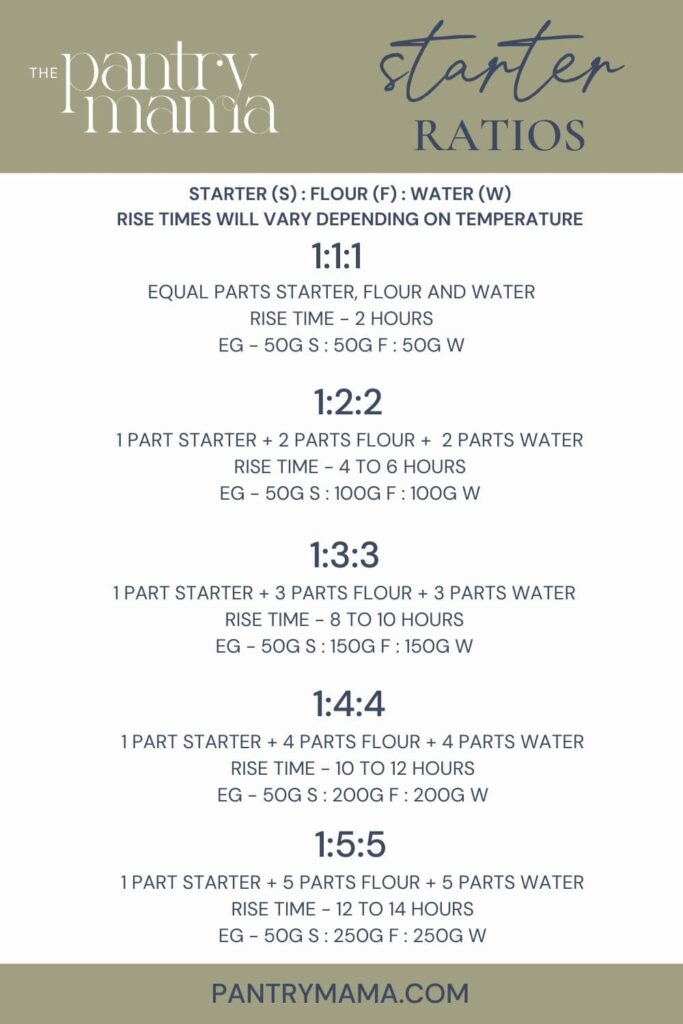
Can You Easily Change Your Starter Ratio?
Absolutely you can easily change your sourdough starter ratio. Remember you're in charge of your sourdough starter and you can easily manipulate it to work for you! This is so important when you're trying to fit sourdough baking into your busy life. You can easily change your sourdough starter ratio from one day to the next, depending on your baking needs that day.
For example, today, you can feed your starter at at 1:2:2 ratio (for example 50 grams of starter, 100 grams of flour, 100 grams of water). You could use 200g of starter for your baking today and then tomorrow, feed the remaining 50g of starter in your jar at a 1:5:5 ratio. This allows you to control how much active sourdough starter you have on hand at any one time.
You may also need to change your sourdough starter ratio to adjust for a different type of flour. Whole wheat flour or rye flour absorb more water than white flour starters so you often need to increase the amount of water you add to your whole wheat starter. This can get a bit confusing because even though you may be using a higher ratio of water, the starter will not really be stiffer because of the type of flour that you are using. I talk about this in my instructions for making a rye sourdough starter.
Effect of Temperature
Temperature has a huge effect on the time that your sourdough culture takes to peak, regardless of what ratio you have used to feed it.
Warmer temperatures make your starter peak more quickly, while cooler temperatures make it peak more slowly. This is the same as when you are leaving your sourdough bread to bulk ferment.
You can use this to your advantage and combine it with either a higher or lower sourdough ratio to manipulate your sourdough starter. Using lukewarm water to in your sourdough starter maintenance routine can reduce the time your starter takes to peak, which is great if you want to make something sooner rather than later.
Alternatively, if you want to be organised and make sure your starter peaks in the morning, then you could feed your starter a higher ratio with some cold water in the early afternoon.
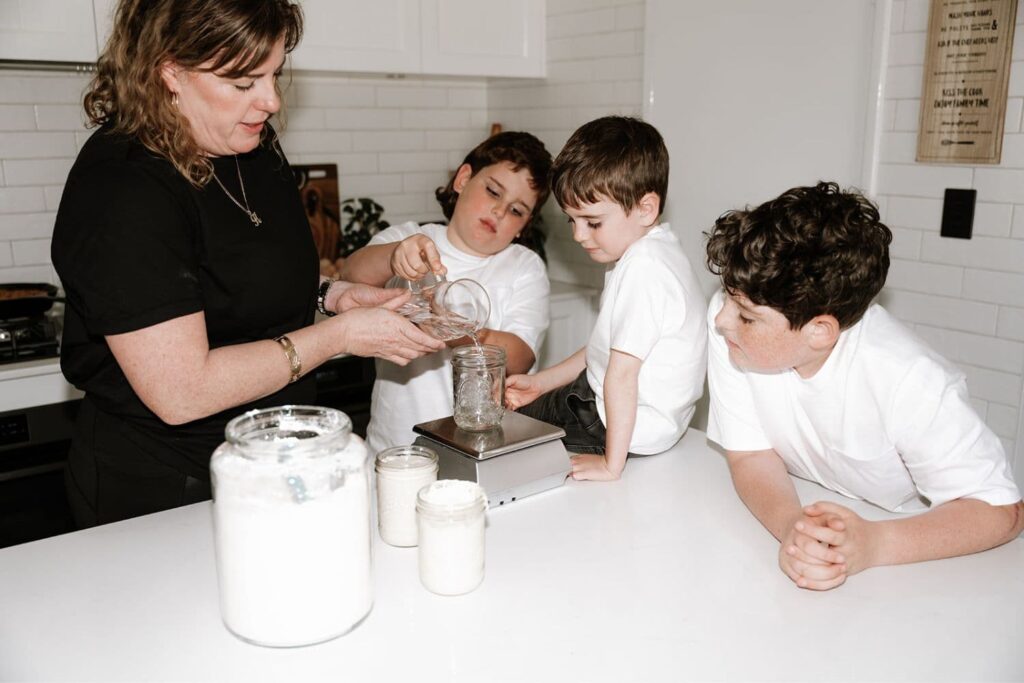
What About Hydration?
Sourdough starter ratios can affect the hydration of your sourdough starter, but only if you intentionally want to change it. Any ratio that uses equal parts flour and water is considered a 100% hydration ratio. For example 1:2:2 or 1:5:5 will both result in a sourdough starter that is 100% hydration because the same amount of flour and water have been added.
To change the hydration of your sourdough starter, you would need to add more or less flour or more or less water. For example, if you want a stiffer starter, you would use a ratio like 1:2:1. This means that for every part of sourdough starter and water you add, you would add twice the amount of flour. A stiffer sourdough ratio will delay the time your sourdough starter takes to peak.
If you want a more liquid starter, you would use a ratio like 1:1:2. This means that every part of sourdough starter and flour you add, you would add twice the amount of water. A higher hydration sourdough starter will peak a lot faster.
The hydration of your sourdough starter can affect the recipe that you're using it in, so you may need to make adjustments for this to ensure success. For example, a sourdough bread dough made with a higher hydration starter will be more wet, so you may need to add extra flour. Majority of sourdough recipes and sourdough discard recipes are written with a 100% hydration sourdough starter in mind.
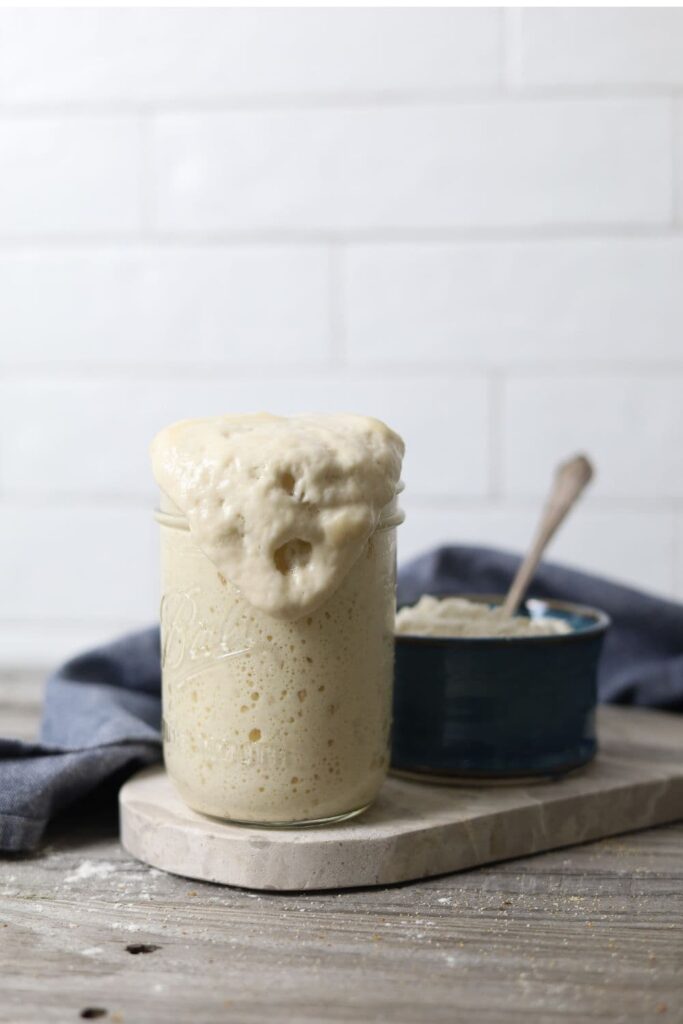
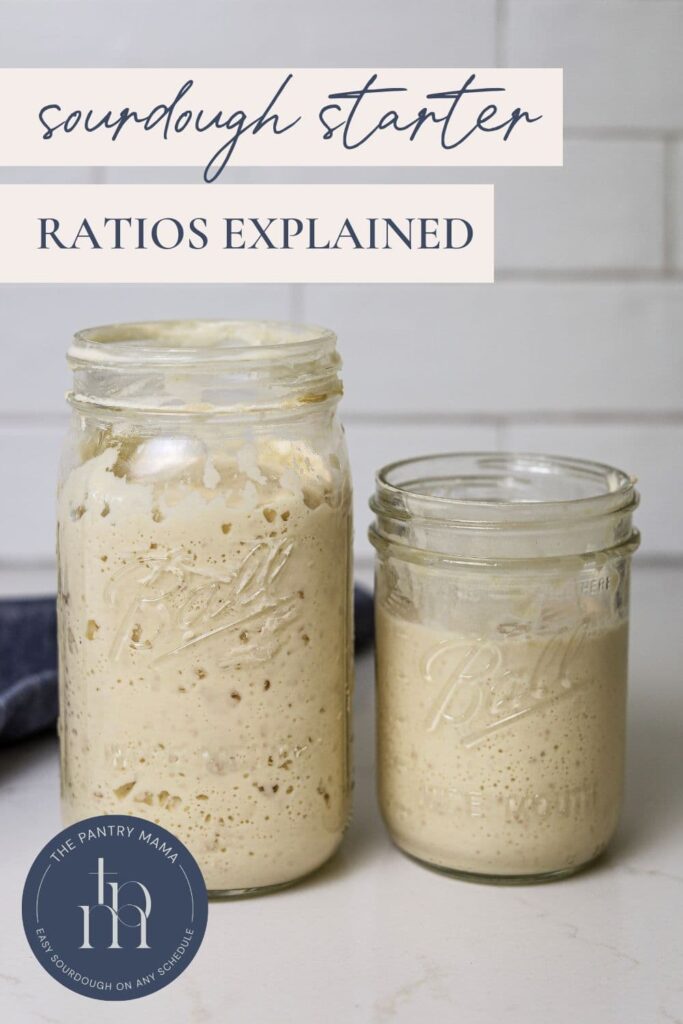

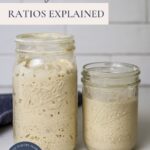
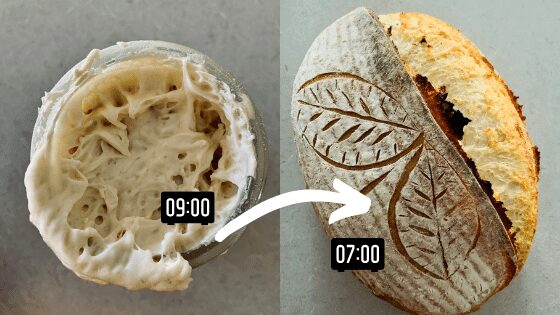
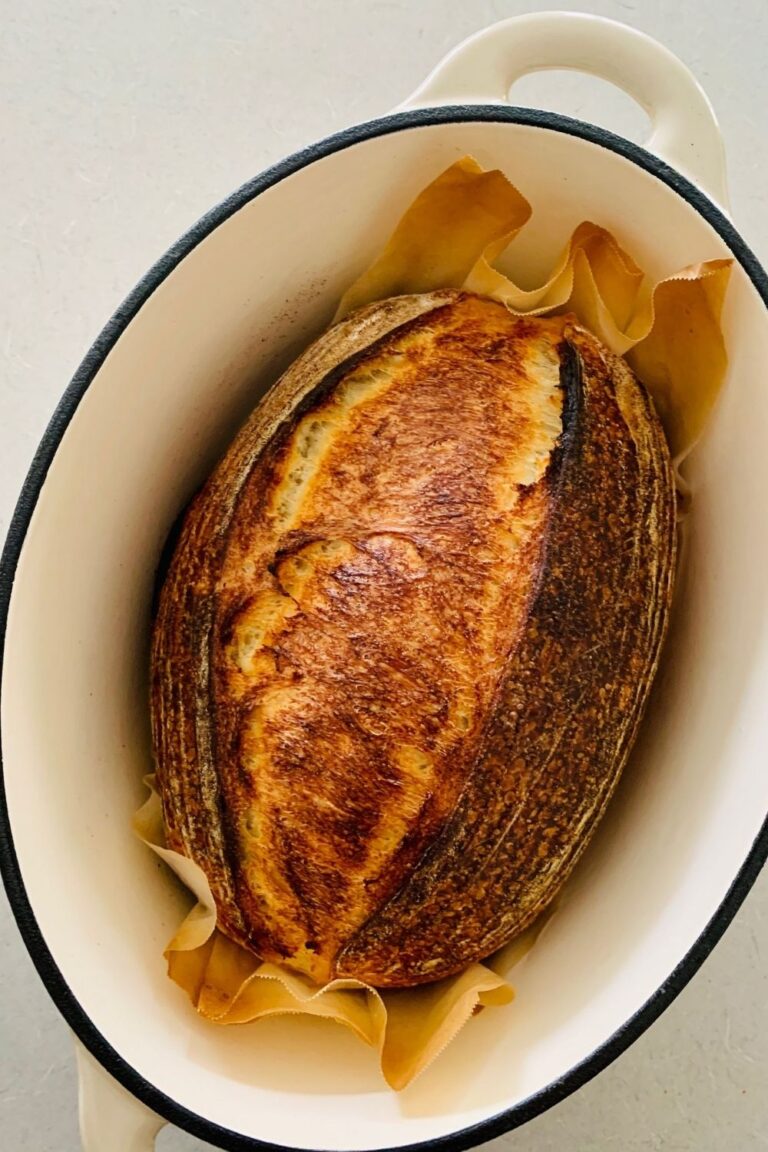
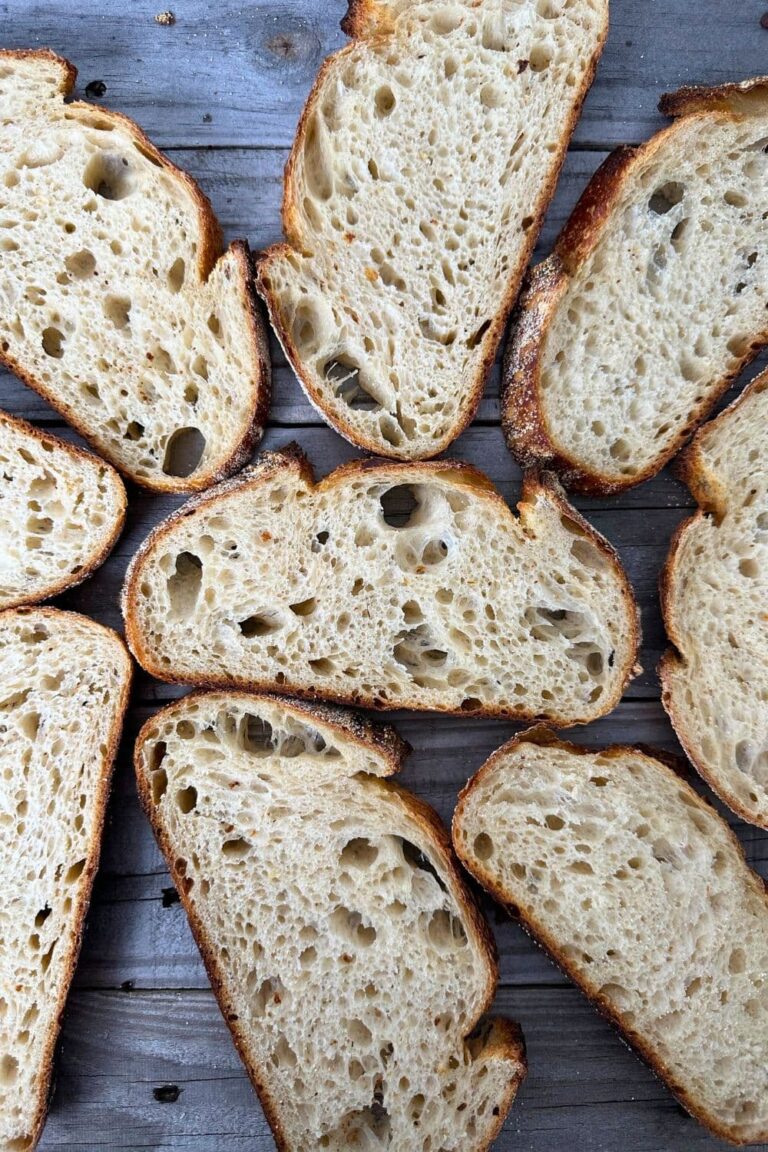
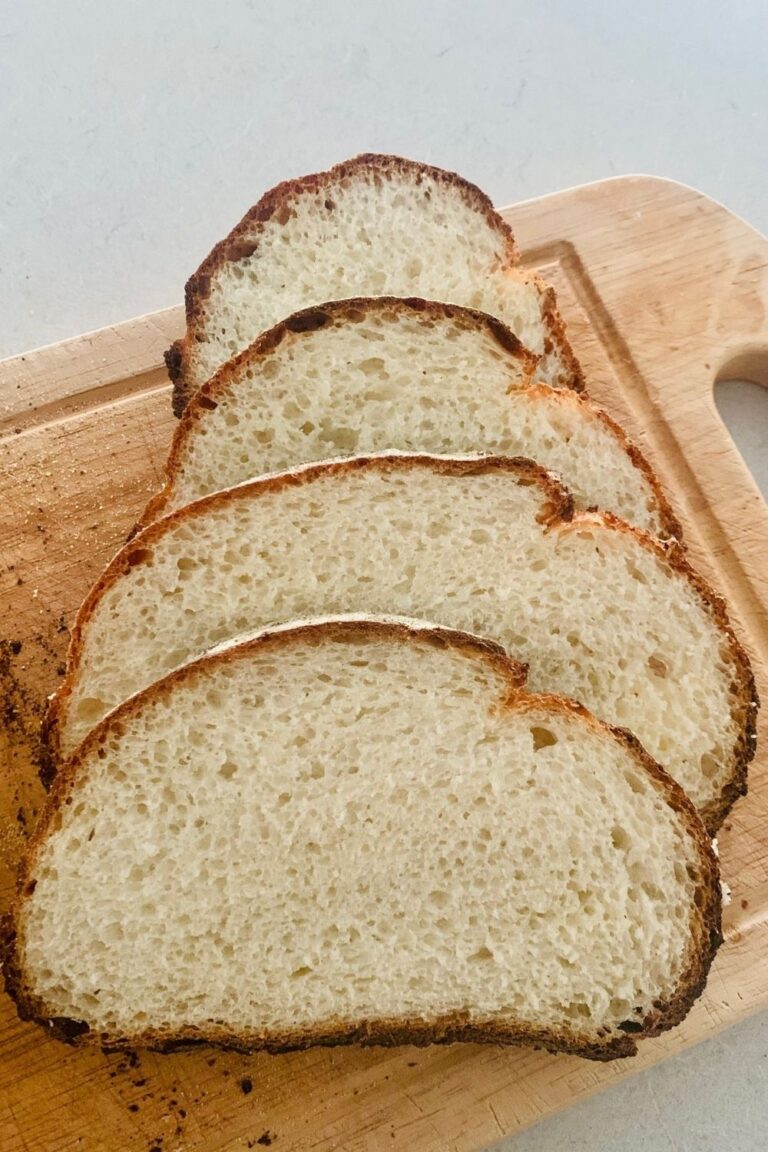

This was so helpful!!! I have been may SD recipes for about 2 years now & this info will definitely up my game! Thanks!
This was great information and so helpful! Thank you!
Also, I am going to go on travel for over a week. When should I feed my starter before I leave and what temperature should I keep it at?
I would place your starter in the fridge, you can find instructions for this here.
I have gifted established starter, it's been home in my fridge 2weeks. Took out 25g brought to room temp and fed 1:2:2... After several hours I think I finally see activity but not doubled yet. Now what?
Saw info in one of your pages here about stirring again to encourage growth? Feed again? Remove some when I do? If so, is that part "real" or discard? There's great info on "regular" starter but just couldn't seem to find what to do exactly with mine... thanks!!!
Thank you, Pantry Mama, for all the good information that you provide.
Your thorough coverage of the many details for sourdough bread much better than any of the gazillion YouTube videos that I have watched. Your emphasis on the "whys" make all the difference.
Very interesting. First time to try to prepare a starter.
Found this very useful. I was struggling with a sourdough timeline and this makes it easy to understand how to gain more control. I had been using a 1:1:1 ratio but yesterday tried 1:3:3 so as be able to feed last thing before bed and be ready to make this morning. Dough is looking good and is now in the fridge for an overnight cold ferment. Tomorrow will be the test.
This was helpful for understanding the ratios! What ratio do you recommend for someone who bakes once per week and keeps starter in the fridge the rest of the week? Only feeding it once.
I'd just do a 1:1:1 ratio if you're keeping it in the fridge. You can lower the amount of sourdough starter too so that you aren't wasting so much flour, so just 25g of starter, then build it up once it's out of the fridge 🙂
Very helpful. This will correct my consistency problem. Thank You. Happy New Year!!
This is great. I have been baking sour dough for a few years. I always use 100% starter and although bread is lovely it's got no sour taste. Now i will be able to get the taste i want. Thank you.
Kitchen at 71F. No bubles after 8 days. 1:1:1. Whipping it at 8 hours interval. I keep hoping or restart?
Are you feeding every 12 hours? I would keep going. Try keeping your starter a bit warmer to get it going 🙂
I have gifted established starter, it's been home in my fridge 2weeks. Took out 25g brought to room temp and fed 1:2:2... After several hours I think I finally see activity but not doubled yet. Now what?
Saw info in one of your pages here about stirring again to encourage growth? Feed again? Remove some when I do? If so, is that part "real" or discard? There's great info on "regular" starter but just couldn't seem to find what to do exactly with mine... thanks!!!
Thank you! This is very helpful.
Why can’t you Use Self rising flour.
Because self raising flour has rising agents in it which are not required in a sourdough starter 🙂
I always keep at least 50 grams of starter. I am baking more and need at least 200 grams of starter on my bake day…How should I feed my to 50 grams of starter to get 200 grams.
Can I feed my starter the nite before and bake the next morning?
This post on how to increase the sourdough starter in your jar will help you 🙂
I’m really enjoying ready these notes. I’m trying to get as much know as I can before I embark on my first sourdough loaf. Thank you for allowing me the straggle along.
Thanks that was very informative. My question is why do you have to discard every day. I have so much discard it seems like a massive waste. I don’t have time to bake daily.
If you don't discard every day, you'll end up with a MASSIVE starter ... for example if you had 150g of starter and you didn't discard, you'd have to feed it at least 150g of water and 150g of flour, then you'd have 450g of starter and then if you didn't discard you'd have to feed it at least 450g of water and 450g of starter ... see where this is going? This post explains exactly why you must discard your starter before you feed it 🙂
What does EG stand for on the chart?
It means "for example" 🙂
When storing in the fridge, do you feed 1:1:1 ratio first?
You can yes, or you can feed it higher, it's really up to you. This post might be helpful - How To Store Sourdough Starter In The Fridge
Thank you for your practical support and for making what may seem complicated, more clear and understandable for people like myself who are still early in their sourdough journey. Blessings!!
This was great information! Thanks
This was a great read. Very informative. I'm new to the game haven't cared for some of the other websites and their explanations. You keep things simple and to the point. I like that. You've given me ideas and inspiration.
Just starting on my SD journey. I'm trying to gather as much information as I can and I like things when they are simple, so I'm loving this site.
This has been a revelation to me. I've been baking sourdough bread for three years and am astonished it has turned out so well given the (apparent) abuse of my starter!! However, I now find myself suddenly with a weak starter and am trying to strengthen it.
Even more importantly: If I am to measure using scales, how do I now measure the "one and a half cups of water", the "three cups of bread flour" and the "half cup of rye flour" to the "scant half cup" of starter that I have always been using to bake my bread?
I'd recommend using this sourdough bread recipe - it's written in grams, so you don't need to convert anything. Super simple 🙂
Thank you so much for this information! I prefer a more sour flavor with my sourdough bread, and I did not know that a higher ratio of flour and water makes that happen. I was doing equal parts from the beginning. I will be adding more flour and water to my starter today.
A new guy here , can I use rye flour initially and then change to all purpose flour or keep feeding it rye flour until after the 7 days? .
Yes you can feed rye initially and then change, no problems 🙂
New guy here just learning about sourdough. I’m not a fan of other sites , I’ve been looking for a couple weeks now I found something that I can understand . So my question is if I start with rye flour how long do I need to keep using it ? .
You can use rye flour for as long as you want to, just the initial 50g to get things started, or keep using 50/50 rye/all purpose, it's really up to you 🙂 I'm so glad you found my site 🙂 xx
Your Starter Ratio formula is amazing. I have been a Nancy Silverton devotee for 25 years. Recently while attempting to bring a 6 month dormant starter back to life, it just wasn't happening even feeding 3x/day/20 days. The 'less flour' formula left me a very weak mess.
You are my new hero by making sense with this chart. My starter is no longer starved and can be controlled for my baking schedule. Thanks, Nancy
I'm so happy I could help you 🙂 xo
I point all noobs to your site. Sourdough does not have to be complicated or labor intensive as most purists project.
The question that must be answered is do you want something to show or something to eat?
I go for both and the secret lies right here within your site.
Happy holidays. And thank you. Dave
I'm so glad you love the website 🙂 Thank you for referring people to my site, I truly appreciate it 🙂 Happy Holidays to you too xo